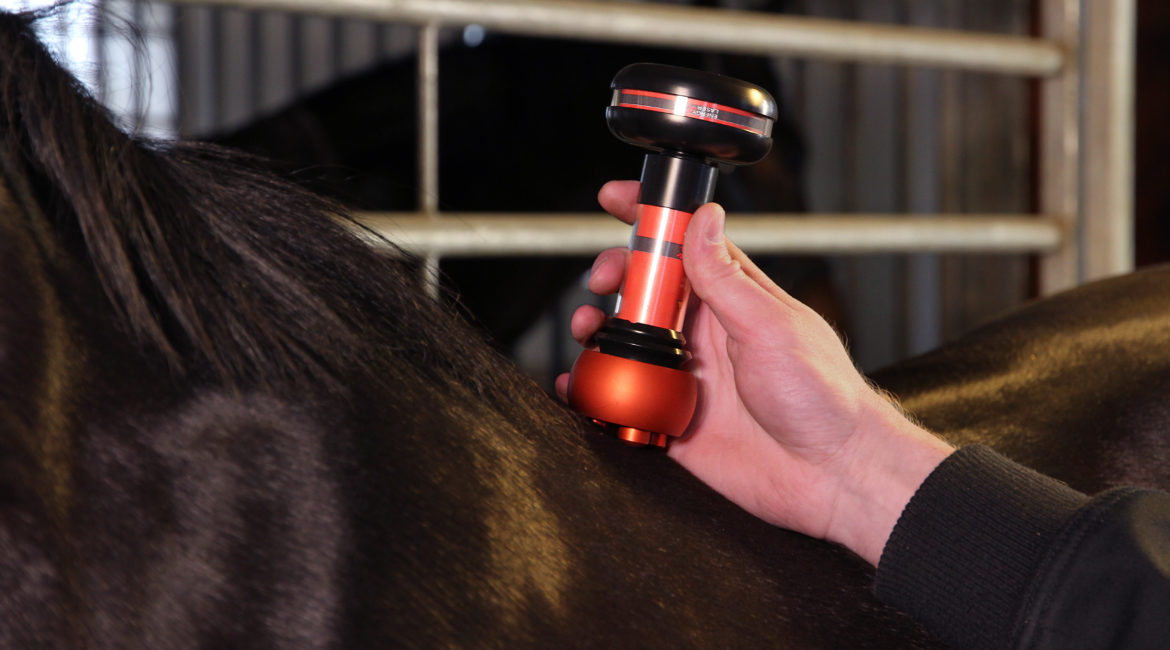Equine Therapy Programs: Transforming Lives One Adventure at once
Equine Therapy Programs: Transforming Lives One Adventure at once
Blog Article
Just How Laser Treatment in Equine Treatment Is Changing Veterinary Care for Horses
Laser therapy has arised as a transformative strategy in equine veterinary care, providing a non-invasive solution that speeds up healing and improves general health and wellness. The portability and versatility of laser therapy gadgets additionally highlight their expanding necessity among vets.
Recognizing Laser Treatment

The technology behind laser therapy is grounded in the principle of photochemistry, where photons are soaked up by chromophores within cells, bring about increased ATP manufacturing and inflection of responsive oxygen varieties (Equine Therapy). This, subsequently, promotes mobile spreading, reduces swelling, and accelerates healing. Veterinary professionals utilize different kinds of lasers, consisting of low-level lasers (LLLT) and high-power Course IV lasers, relying on the certain healing goals and the nature of the equine condition being treated
Various laser wavelengths and power settings are meticulously chosen to target numerous cells midsts and achieve preferred clinical end results. Safety procedures are critical, as incorrect usage can lead to thermal damages or suboptimal restorative results. Therefore, a comprehensive understanding of laser therapy's mechanisms and applications is essential for its effective implementation in equine veterinary technique.
Advantages for Horse Health
The myriad advantages of laser therapy for equine health include boosted healing, pain reduction, and improved movement. This innovative therapy modality leverages specific wavelengths of light to permeate tissues, boosting cellular feature and advertising fast cells repair service. The non-invasive nature of laser therapy ensures minimal anxiety and pain for the horse, facilitating a smoother healing process.
Boosted recovery is just one of the primary advantages, as laser treatment speeds up mobile regeneration and collagen synthesis. This causes faster recuperation times from injuries and surgical treatments. Discomfort decrease is accomplished through the anti-inflammatory impacts of laser treatment, which reduces swelling and lowers the manufacturing of pain-inducing chemicals. Because of this, steeds experience considerable relief from chronic and sharp pain problems.
By decreasing swelling and pain, and improving tissue repair work, laser treatment assists in recovering joint function and muscle mass adaptability. Therefore, laser therapy stands as a transformative tool in modern-day equine vet care.
Typical Problems Dealt With
Laser treatment has arised as a versatile therapy option for a selection of typical equine conditions. Amongst these, musculoskeletal injuries are especially amenable to laser therapy. Equine Therapy. Soft tissue injuries, such as tendonitis and tendon pressures, benefit from the anti-inflammatory and analgesic results of laser treatments, which speed up healing and reduce pain. Additionally, laser therapy is effective for problems like osteo arthritis, where it helps mitigate joint swelling and look at more info advertise cells fixing.
Wound monitoring is one more location where laser therapy has actually shown significant guarantee. Chronic injuries or slow-healing ulcers can be particularly challenging in horses, however laser therapy improves mobile regrowth and boosts blood flow, therefore quickening the recovery process. Laser therapies have actually been successfully utilized in managing hoof conditions such as laminitis and abscesses, easing pain and advertising quicker recuperation.

Technology Behind Laser Treatment
Past the myriad problems treatable with laser treatment, the technology itself advantages more detailed exam. At the heart of laser treatment is making use of specific wavelengths of light to penetrate tissues and elicit organic actions. These wavelengths, typically ranging from 600 to 1000 nanometers, are selectively soaked up by chromophores in the skin, muscular tissue, and other tissues, initiating a cascade of cellular events.
Laser devices made use of in veterinary medication often utilize low-level laser treatment (LLLT) or cool laser therapy. Unlike high-powered medical lasers, these tools run at reduced power degrees, enhancing therapeutic advantages while minimizing thermal damages. The power from the laser light promotes adenosine triphosphate (ATP) production, boosts cellular metabolism, and increases tissue repair procedures.

Success Stories and Situation Research Studies

Showcasing the concrete benefits of laser treatment, numerous success tales and study brighten its transformative effect on equine wellness. One such situation includes a pureblooded racehorse struggling with persistent tendonitis. Traditional treatments produced minimal renovation, yet after integrating laser treatment Get More Info right into the program, the equine exhibited substantial decreases in swelling and discomfort within weeks, eventually going back to affordable racing.
Another engaging instance includes a dressage horse detected with extreme back discomfort, limiting its performance. A vet team employed low-level laser therapy (LLLT) to target the irritated areas, causing marked improvement in adaptability and a noteworthy reduction in discomfort. Over a number of sessions, the steed regained its peak form, showcasing the efficiency of laser therapy in resolving bone and joint problems.
In addition, a study carried out at a leading equine clinic analyzed 50 equines with various soft cells injuries treated with laser treatment. The results stood out: 85% of the equines showed sped up recovery times and boosted mobility. These instances emphasize the convenience and effectiveness of laser treatment in equine medicine, using a non-invasive, scientifically-backed technique to boosting healing and efficiency in equines.
Conclusion
Laser therapy is changing equine veterinary treatment by offering a non-invasive treatment that increases recovery, lowers swelling, and relieves pain. With its performance in dealing with an array of problems, from bone and joint injuries to persistent disorders like osteo arthritis, this modern technology dramatically boosts equine wellness and flexibility. The transportability and adaptability of laser therapy better underscore its transformative effect on vet techniques, strengthening its function as an important device in contemporary equine healthcare.
Report this page